CarEdge saved me over 4,500 dollars on a brand new Honda Pilot. I can't say thank you enough.
Price intelligence
Find a wide range of vehicle listings with market insights on new and used listings near you.
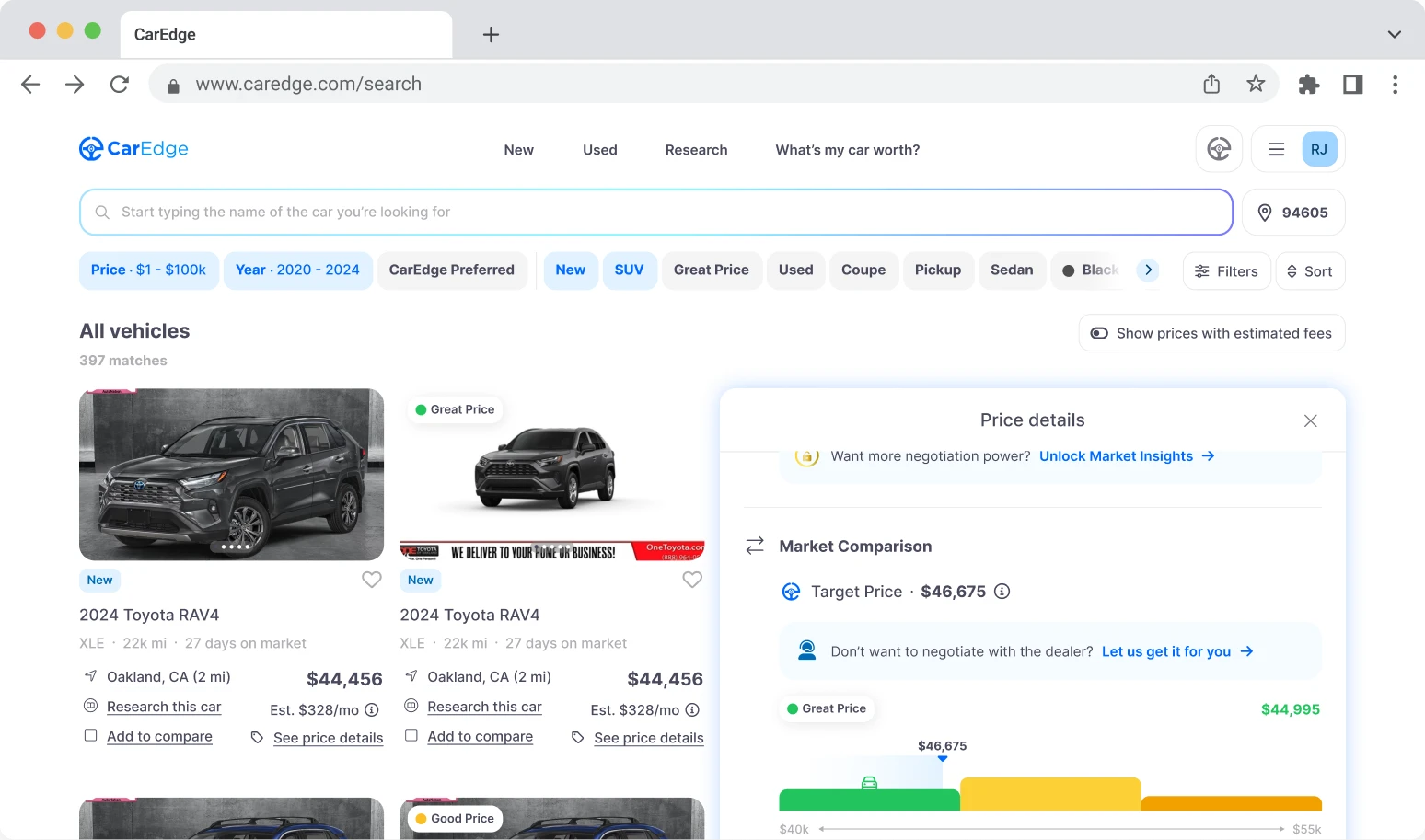

Help us personalize your CarEdge experience — it only takes a second.
Your answers help us personalize your CarEdge journey — we’ll follow up with tips and next steps that match your buying timeline.

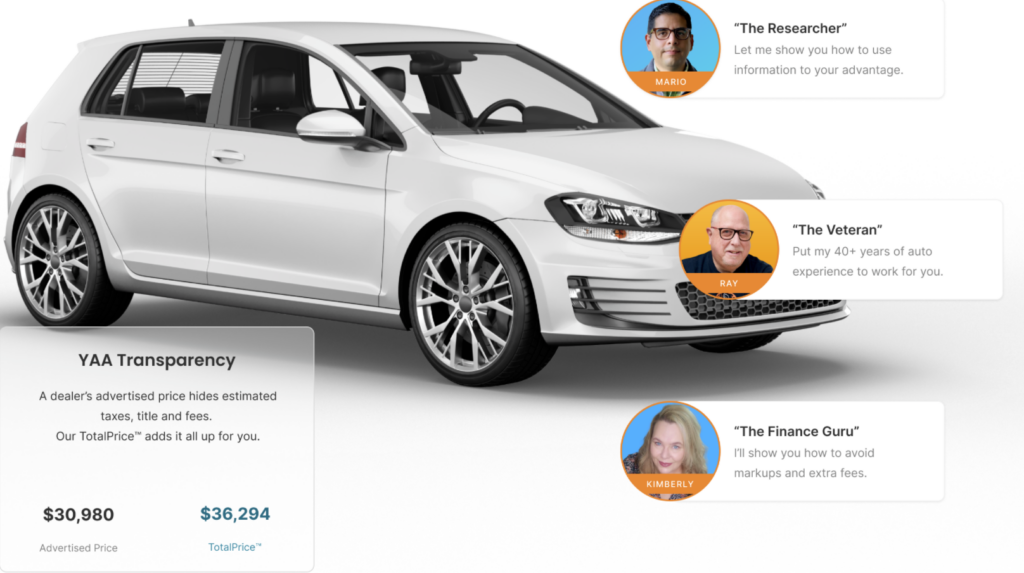
The last thing you want is to buy a vehicle, drive it off the lot, and then be faced with thousands of dollars in repairs. Mechanical breakdown insurance is a way to budget future vehicle repair needs into your financial picture. It’s not all that different from how health insurance works. When your vehicle is healthy, your wallet is happy.
CarEdge will soon offer mechanical breakdown insurance in California. Why then, are CarEdge products called extended warranties, or vehicle service contracts in other states? When it comes to the law, words matter. In California state law, an extended warranty may only refer to manufacturer warranties, and a vehicle service contract may only be sold by a registered car dealership. As an online company that leaves only one option; mechanical breakdown insurance. When it comes time to get coverage for a used vehicle outside of the manufacturer’s warranty, California law says that we nor any other provider can label our coverage an ‘extended warranty.’
This frequently leads to a lot of confusion, and an opportunity for car dealers to jack up prices on extended warranties. In this article we’ll address the similarities and differences of what you can get at a car dealer, and what you get with CarEdge mechanical breakdown insurance (MBI).
Let’s dive in.
CarEdge’s California mechanical breakdown insurance will provide drivers with the same exact coverage that our extended warranty products offer in the other states. We know it’s confusing, but it’s the law!
However, not every mechanical breakdown insurance product is the same. Some have very limited coverage at high prices. Just like with a traditional extended warranty, it is critically important that you know what to expect before you buy.
Annoyed by the dealership finance manager who is pushing last-minute add-ons as you try to buy a car?
Dealership finance managers make A LOT of money from commissions when you buy their extended warranty or vehicle service contracts. That’s precisely why they are so distraught when you turn them down. It’s important for consumers to know that they have options outside of the dealer finance office, and we encourage everyone to get a quote from CarEdge to use as negotiating leverage with the dealer — whether you buy from us or not!
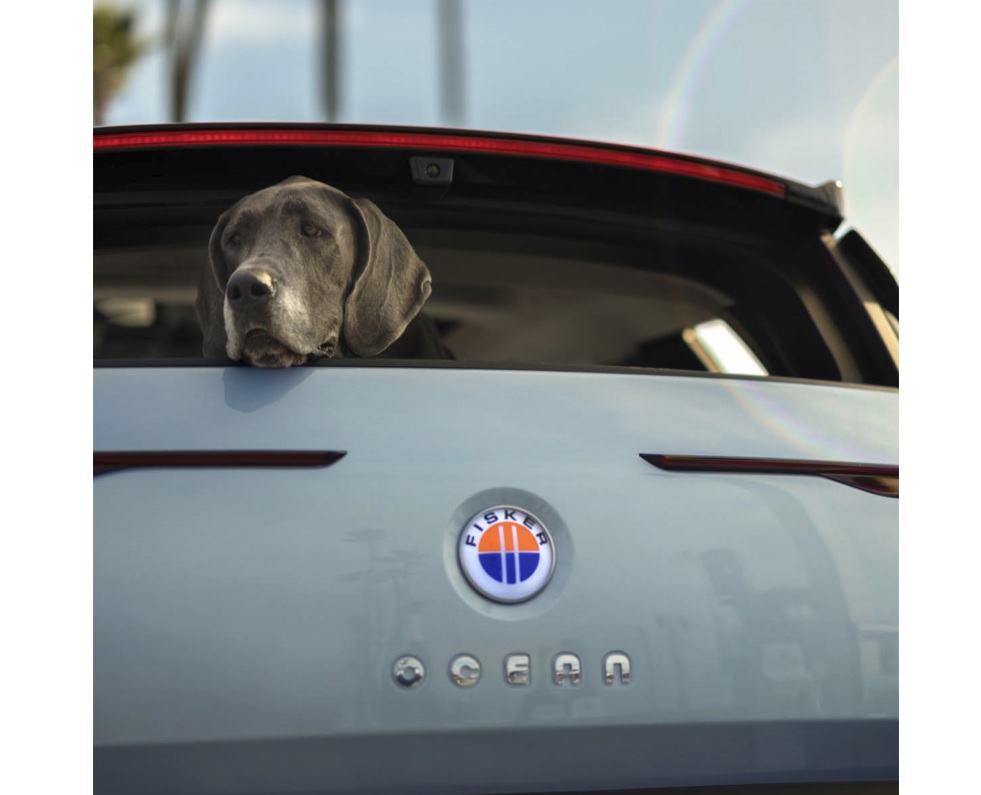
When shopping around, it’s important to fully understand the benefits of mechanical breakdown insurance products.
Exclusionary mechanical breakdown insurance lists the components of the vehicle that are not covered or excluded. This means that the vast majority of vehicle components ARE covered. CarEdge’s mechanical breakdown insurance is exclusionary, great news for you!
Named component mechanical breakdown insurance policies ONLY cover the vehicle components that are listed. Everything else isn’t covered. Chances are, you won’t get the coverage you need and expect if you go with a named component policy.
How much you’ll pay for an extended warranty depends on where you shop. Ray and Zach Shefska of CarEdge compared a quote from Endurance with CarEdge’s extended warranty offer, and the difference was stark. For the exact same vehicle, Endurance quoted $3,600, while CarEdge offered coverage for $1,600 in the apples-to-apples comparison. Don’t settle for just anything, get a free quote from CarEdge!
We believe transparency is key to building positive relationships with consumers. We’ve all been through the pain of buying a car before. That’s why we guarantee honest, no-hassle coverage for your vehicle. Here’s what CarEdge’s mechanical breakdown insurance covers.
For most vehicles we offer exclusionary coverage. This means your vehicle is covered from “bumper-to-bumper” for everything but normal wear and tear, routine maintenance and anything that is explicitly listed in Section 8 of the contract.
Global positioning system (GPS), instrument cluster, infrared systems, cruise control servo, proximity pass key and sensor, power antenna motor, 4WD encoder motor. Alternator, starter motor, front and rear wiper motors, voltage regulator, distributor, solenoids, manually operated switches, electronic level control compressor including its sensor and limiter valve, electronic fuel injection sensors and injectors, electronic ignition module, ignition coils, power window motors/regulators, rear window heating elements, power mirror motors, power seat motors, and power lock actuators.
Drive shaft/U joint, torque converter, and transmission mounts.
Factory installed turbocharger or supercharger, including housing, and all internal parts.
Crankshaft and bearings, oil pump, fuel pump, diesel injection pump, internal timing gears or chain/belt, camshaft, camshaft bearings, valve lifters, rocker arm assemblies and push rods, valve guides, pistons and rings, wrist pins, connecting rods, motor mounts, and distributor drive gear.
Pinion bearings, side carrier bearings, ring and pinion gears, carrier assembly, thrust washers, axles, axle bearings, constant velocity joints, internal transaxle seal, and drive axle housing
Coverage is provided in the event of a failure to the Hybrid Drive Battery, Electric Drive Battery, or High Voltage Battery. Replacement may be made with a battery of like kind and quality with an energy capacity (kWh storage) level at or above that of the original battery prior to the failure. The amount of energy that these batteries can store will decrease with time and miles driven.
Upper and lower control arms, control arm shafts and bearings or bushings, upper and lower ball joints, radius arm and bushings, torsion bars and mounts or bushings, stabilizer bars, links and bushings, struts, strut bearing plates, shock absorbers, spindle and spindle support, wheel bearings, and the following variable dampening suspension parts: compressor, control module, actuator, solenoid, height sensor, and mode selector switch.
In the event of a failure of the vehicle’s professionally Installed Charging Station, coverage will apply to the internal components of the professionally Installed Charging Station. This benefit will cover up to a maximum of twenty‐five hundred dollars ($2,500.00) towards the repair of a covered professionally Installed Charging Station.
Master cylinder, power brake cylinder, vacuum assist booster, hydro boost, disc brake caliper, wheel cylinders and compensating valve. The following ABS Components are covered: Hydraulic control unit, electronic control processor, wheel speed sensors, hydraulic pump/motor assembly, pressure modulator valve, isolation dump valve, and accumulator.
Engine cooling fan and motor, fan clutch, serpentine belt tensioner, radiator, heater core, water pump, and thermostat.
Compressor, condenser, evaporator, a/c clutch & coil, expansion valve, receiver drier, blower motor, and heater control valve.
Seals and gaskets coverage is included for covered components on Vehicles with less than one hundred twenty‐five thousand (125,000) miles at the contract purchase date.
Steering gear box, pump assembly, rack and pinion, pitman arm, idler arm, tie rod, control valves, and intermediate shafts.
If you’d prefer to look over the CarEdge mechanical breakdown insurance contract, check it out here.

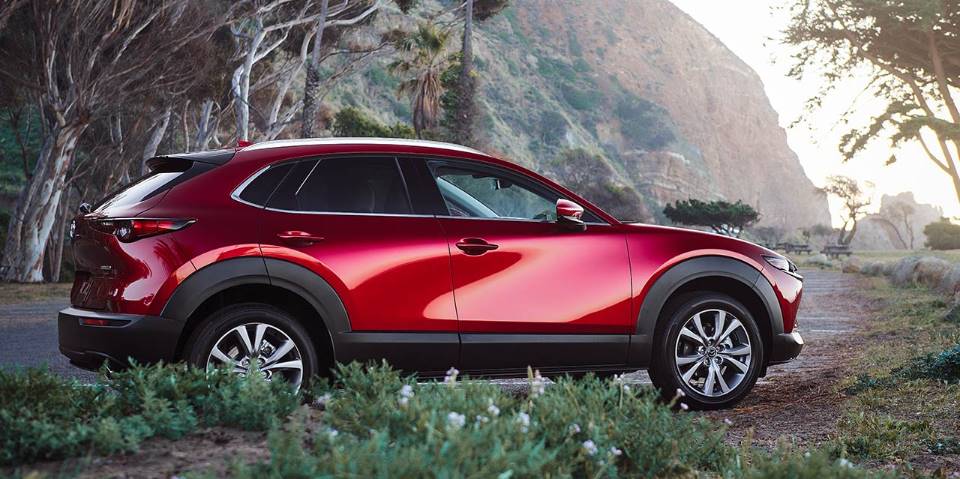
Every year, Consumer Reports sends dozens of car models through half a million miles of track testing and data collection. The non-profit organization buys all of its test cars anonymously from dealers and does not accept free samples from automakers. The Consumer Reports testing regimen includes more than 50 scientific tests on every vehicle it evaluates.
The respected organization combines their findings with survey data from their 6 million subscribers to publish their annual Consumer Reports brand rankings. The pinnacle of the Consumer Reports’ annual rankings is the overall scores tallied for each brand.
In 2022, Consumer Reports scored 32 automotive brands based on their overall scores in reliability, consumer satisfaction, road testing and safety. This year’s rankings bring surprising changes and a new leader.
Subaru climbed two spots to number one in the 2022 Consumer Reports brand rankings. The Japanese automaker known for standard all-wheel drive dethroned Mazda with an overall score of 81. The 2022 Subaru Forester has ranked among Consumer Reports’ top picks for the 9th consecutive year. Fascinatingly, six of the top 10 brands in 2022 are Japanese automakers: Subaru, Mazda, Honda, Lexus, Toyota and Infiniti.
The highest ranking American automakers in 2022 are Buick (72), Chrysler (71), and Dodge (67). Cadillac and Ford just barely passed the test, scoring 63 and 62 overall. Chrysler and Dodge have been known for reliability issues in the past, so it’s great to see them improving. Likewise, BMW’s luxury vehicles have long been known for their maintenance expenses, so to achieve #3 overall is a notable feat.
As more automakers make advanced safety features standard on their models, the weight of Consumer Reports’ safety scoring is separating the winners from the losers.
With Subaru now number one overall, Mazda falls to second place, followed by BMW, Honda, Lexus, Audi, Porsche, Mini, Toyota, and Infiniti. Here are the overall brand scores from Consumer Reports.
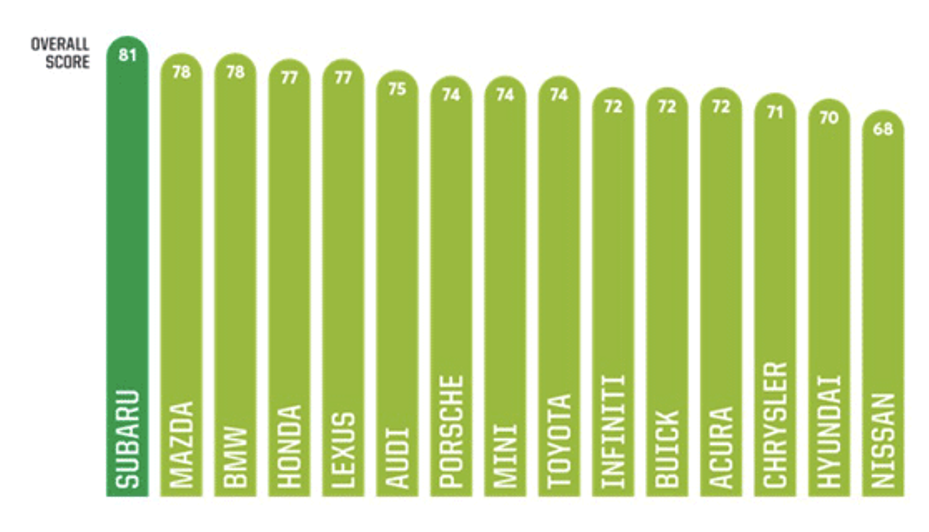
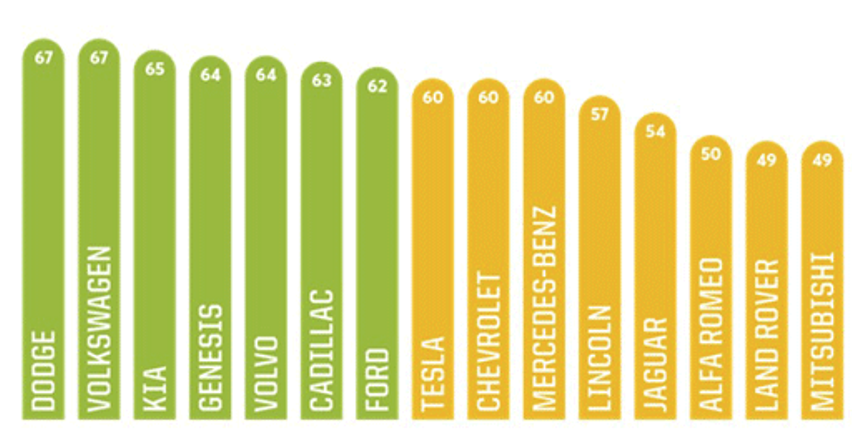
Tesla fell seven spots to #23 in Consumer Reports’ overall brand rankings. In a press release, Consumer Reports cited the so-called ‘yoke’ steering wheel in the refreshed Tesla Model X and Model S as causes for concern and consumer dissatisfaction. Jake Fisher of Consumer Reports told Automotive News that Tesla’s tendency to push the limits is partly to blame. “It dropped more than any other automaker, kind of due to their own decisions,” he said.
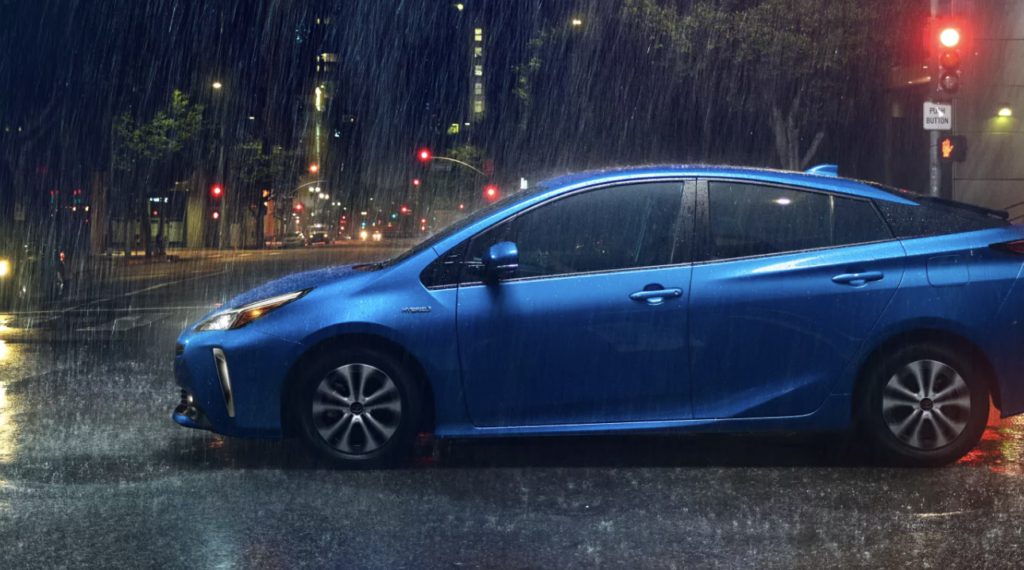
Everyone’s talking EVs, however Toyota’s hybrid powertrains remain the top-rated low-emissions choice at Consumer Reports. As part of their focus on low-emissions transportation, CR included the Green Choice designation for the second year. Toyota (9th overall) leads the Green Choice awards with 11 hybrid and plug-in hybrid models on the list.
What’s particularly interesting about this is the fact that Toyota has yet to release a single fully-electric vehicle. Their first, the 2023 Toyota bZ4X, is due to arrive later this year.
You can access the detailed 2022 Consumer Reports brand rankings with a membership to the non-profit.

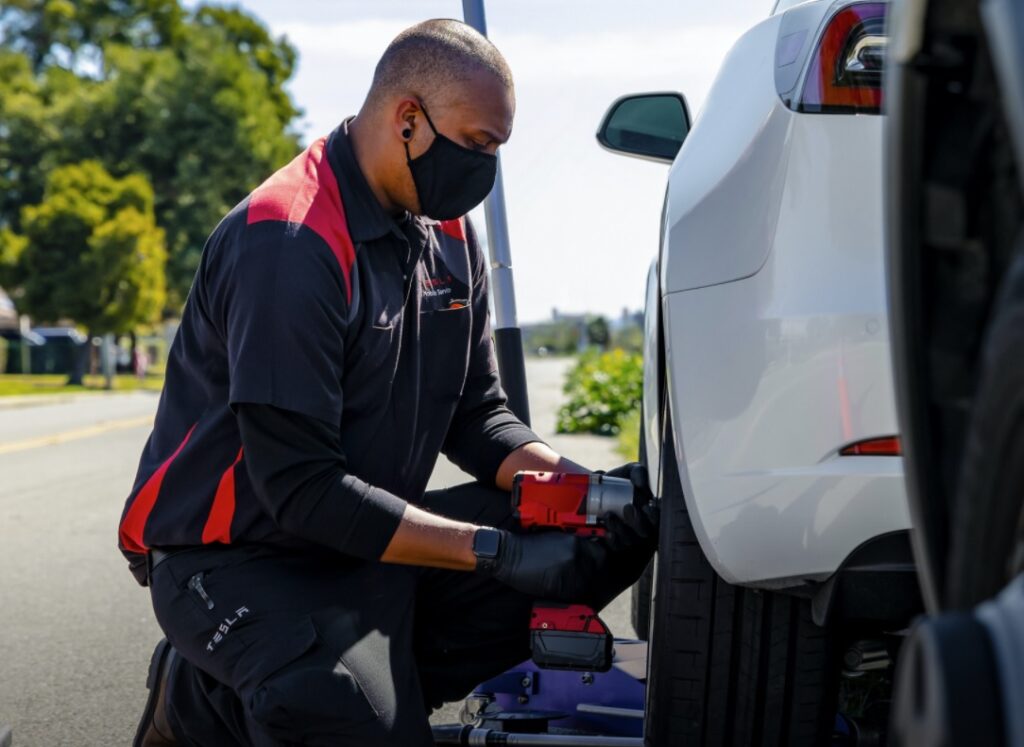
Electric car maintenance is just one of many “new” experiences you’ll encounter when you buy your first EV. Instead of spending $50 at a gas station in a five-minute fill up, EV drivers plug in at home for an overnight charge. On the other hand, road trips require more planning and flexibility with an EV.
Another adjustment for drivers making the switch concerns maintenance and routine care. Electric car maintenance is not the kind of project you can do in your home garage using tutorial videos. It’s important to start by addressing a common EV ownership myth: electric cars are not maintenance-free. Of course, no mode of transportation is maintenance-free. Even riding a bicycle requires routine and unexpected work to keep the tires in motion and in good working condition. Fortunately, fewer moving parts should mean less maintenance overall. Is that always the case?
In this electric car maintenance guide, we’ll explain routine EV maintenance, and how often you should expect to make a service center visit.
The takeaway is that although electric cars require less maintenance, they do still need attention every once in a while. Just like a traditional internal combustion engine vehicle, EVs need:
Here’s the honest truth about EV maintenance needs:
The past decade of electric vehicle sales has shown that the vast majority of fully-electric models require less maintenance than combustion counterparts. So much so that automakers promote maintenance cost savings in their marketing campaigns for the dozens of EVs coming out in 2022.
EVs have a higher upfront cost, so it’s important to find ways of making up for the difference with fuel savings and today’s focus: electric car maintenance.
Here’s what you can expect when transitioning to a fully-electric vehicle.
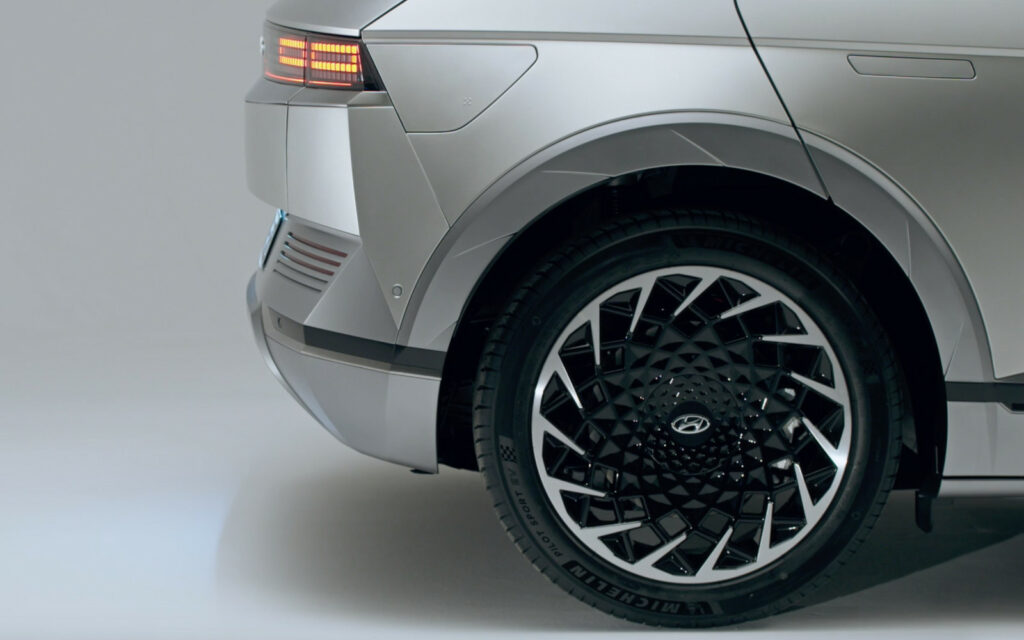
Electric vehicles are very heavy. Popular electric crossovers like the Volkswagen ID.4 and Tesla Model Y weigh as much as a heavy-duty pickup truck. Tires undergo greater wear and tear on an electric vehicle everytime the car accelerates or slows to a stop. Many EV owners report needing new tires every 20,000 miles or so.
Some EV owners choose to spend extra on tires that are rated as energy efficient. It’s not required, but EV-friendly tires can extend range by up to 5%. Regular tire pressure should be checked and adjusted often (at least once a month) to ensure proper inflation.
Believe it or not, today’s electric vehicles still require the same kind of 12 volt battery that you’ll find under the hood of most combustion vehicles. Why? The massive battery pack under the floor of the car is engineered to be optimized for delivering power to the electric motors. The electronics and comfort features in the cabin and lights around the vehicle are all powered by a separate, smaller 12 volt battery. So yes, your state-of-the-art electric vehicle may need a new bulky battery in a few years.
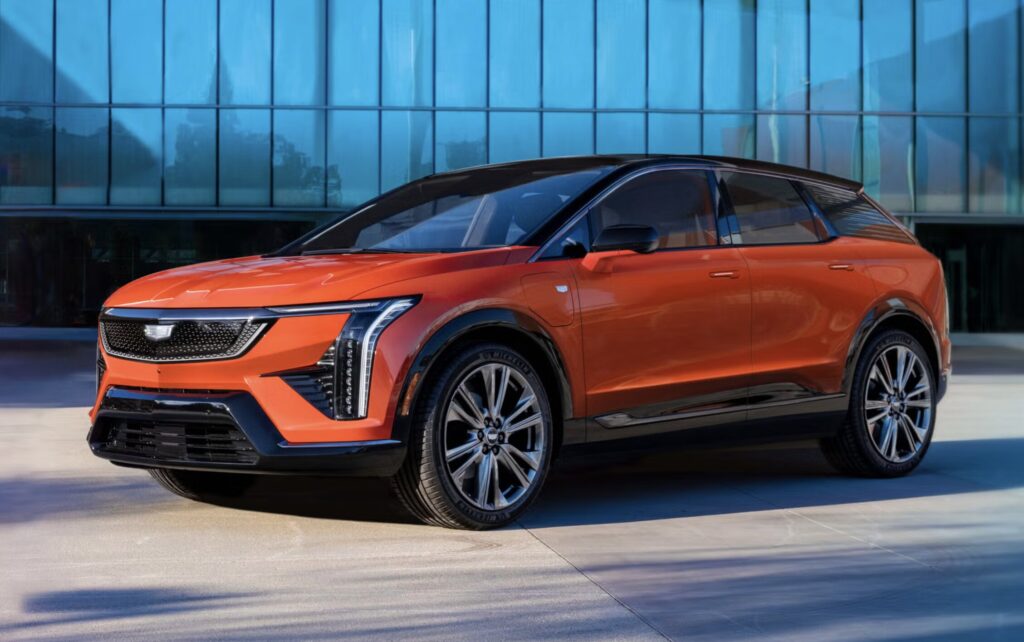
In case you’re wondering, the massive battery pack that is sealed under the floor of the vehicle is meant to last for hundreds of thousands of miles without issue. Automaker vehicle warranties cover the battery for up to 10 years and 100,000 miles.
Perhaps the worst thing that could go wrong with an electric vehicle is needing a new lithium-ion battery pack outside of warranty coverage. A full battery replacement costs anywhere from $5,000 to $15,000, depending on the model.
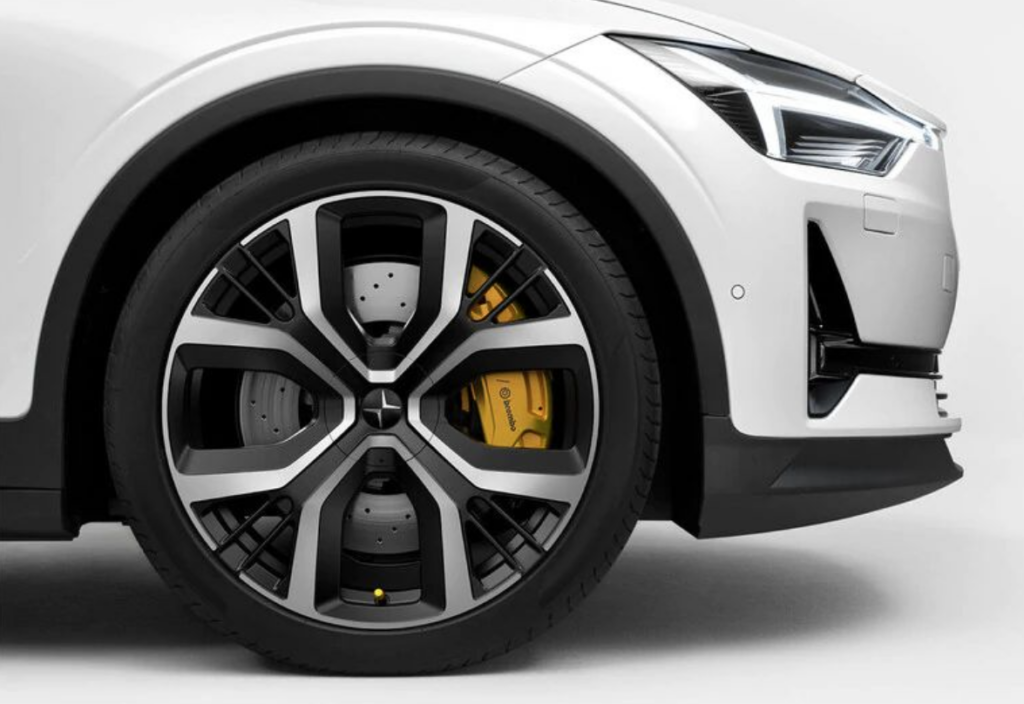
Most modern electric vehicles have regenerative braking, which harnesses the electric motor to slow the vehicle while adding charge to the battery pack. Regenerative braking not only extends range, it greatly reduces wear and tear on the brakes. Tesla’s have been known to go many years without any brake maintenance because of regenerative braking. A few EVs, such as the Volkswagen ID.4, even use old-fashioned drum brakes in the rear due to the greatly reduced use of electric vehicles brakes. Still, brakes will need to be checked during scheduled maintenance. Safety first!
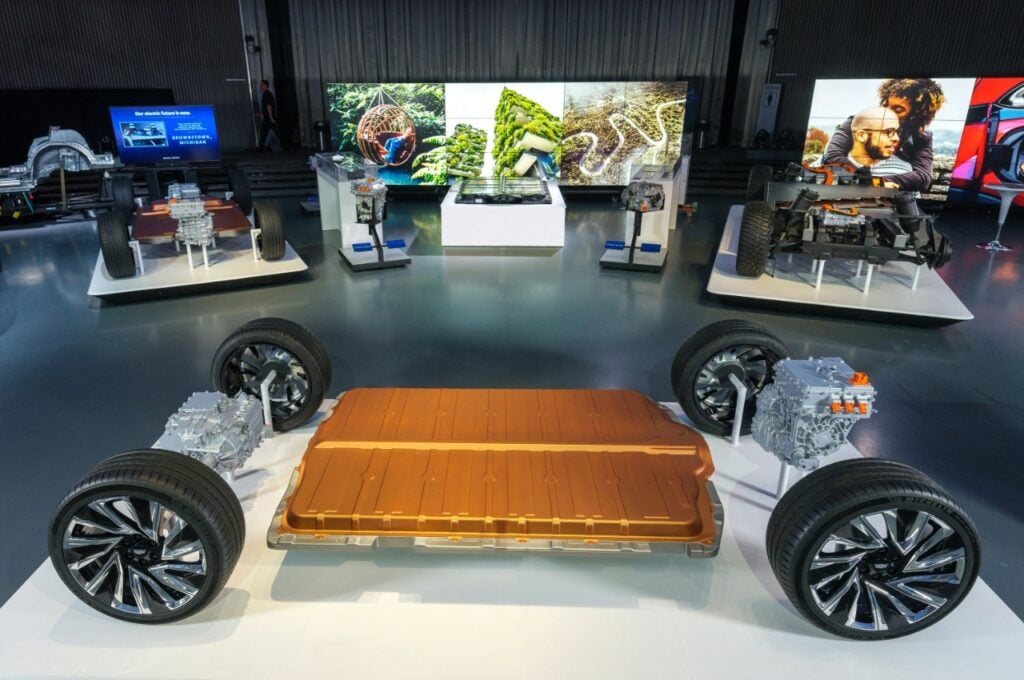
As explained above, brakes on an electric vehicle typically avoid the usual wear and tear of combustion cars due to the help of regenerative braking. Still, brake fluid should be checked during scheduled maintenance. Some EV models require battery coolant fluid exchanges at some point, albeit quite infrequently. HVAC refrigerants also need checking and top-offs as needed. Don’t forget about the windshield wiper fluid.
I’ve been a passenger in more than one smelly Tesla. I repeat, electric cars are NOT maintenance-free! They have cabin filters just like every other car. Failing to change the cabin filter at regular intervals also irritates allergies and permits air pollution into the cabin. Smelly electric car? It’s likely a cabin filter in need of changing.
It’s easy to forget that electric vehicles have now been on roads for over a decade. With billions of miles driven, we’re finally starting to get some idea of the reliability of electric vehicles.
There are many examples of electric vehicles that have gone hundreds of thousands of miles while following maintenance schedules. EV skepticism is understandable; it’s a whole new vehicle ownership experience. However, frugal car buyers would be mistaken to overlook the maintenance and fuel savings that electric vehicles offer for most consumers.
In the end, owners spend about the same amount of money in five years of Tesla Model 3 ownership as they would owning a cheaper Toyota Camry for the same period. How so? Fuel and maintenance savings add up quicker the more you drive and the longer you own the car.
How will dealership service center revenue streams adapt to the decreased maintenance needs of electric vehicles? Will dealers be getting in on the software-by-subscription game? Or will dealers put up a fight to preserve their wallets?
There remain many unknowns and this time of rapid change in the automotive industry. Your consumer advocates here at CarEdge are helping thousands of car buyers navigate the auto market to save more, and stress. Learn how you can save thousands without lifting a finger with CarEdge’s AI Negotiator.

The ongoing chip shortage has tightened new vehicles supply to the extent that many dealers are adding enormous markups to their inventory. CarEdge previously reported that both General Motors and Ford have sent sternly-worded memos to their dealerships warning against the anti-consumer practices that automakers are hearing about from frustrated car buyers. Now, Hyundai and Genesis are getting serious about dealers tarnishing their brands with outrageous markups.
Automotive News reports that North American branches of Hyundai and Genesis are fed up with overly aggressive pricing strategies. The letter obtained by Automotive News warns U.S. dealers against damaging the brand’s reputation with markups that mislead buyers and balloon transaction prices.
While Hyundai Motor Group acknowledges that the MSRP is just that, the suggested retail price, they have tools they are not afraid to use if U.S. dealers don’t change their pricing practices. The letter reportedly floats reductions in future allocations, advertising benefits and the loss of other incentives as possible repercussions.
The letter to American Hyundai dealers specifically calls out the trickery of advertising one price online, and then surprising customers with a higher price once it’s time to start paperwork.
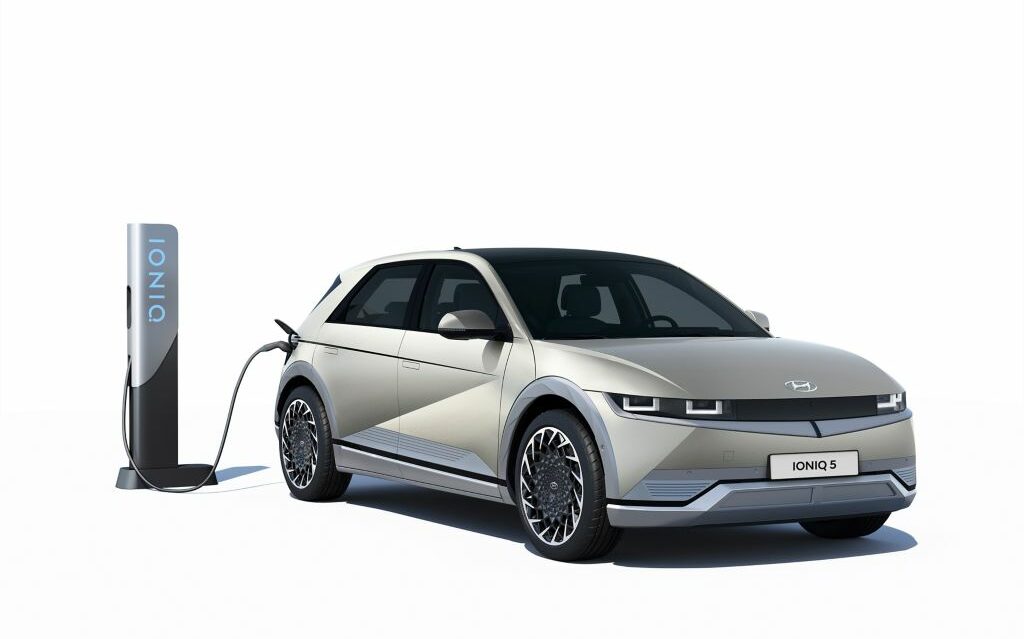
Sales executives from the North American divisions of Hyundai and Genesis noted that angry consumers brought this to their attention.
“We are writing now because with great regularity our customers around the country are voicing displeasure with certain pricing practices which, if left unchecked, will have a negative impact on the health of our brand,” the executives said in the letter.
Finding a new vehicle at MSRP is a challenge no matter what brand you’re in the market for, however Hyundai has seen some of the most outrageous dealership markups of all. One buyer in Massachusetts had worked out a deal over the phone for a new, all-electric Hyundai IONIQ 5. The salesperson he worked with committed to selling the EV at MSRP. The customer then drove three hours to the dealership, only to be met by a different sales manager who demanded a $5,000 markup for the same car.
Fortunately, this customer was able to find a better deal elsewhere, but many first-time Hyundai customers are not willing to give the brand second chances. Kia and Hyundai markups are among the largest in 2022, according to Edmunds. Hyundai transaction prices average $1,498 above sticker price; and for Genesis it was $1,603 higher. Hyundai markups are among the largest out there, and corporate leadership knows that is a bad look for the brand.
It’s refreshing to see an automaker playing the long game with customer relations. The letter warns dealers that once inventory stabilizes, customers will remember how they were treated.
“Once supply and demand come into greater equilibrium, customers will feel that they were overcharged for their vehicle and thus look to other brands the next time they are shopping. We believe that the risk of losing customers and potential future customers far overweighs any short-term gains to be had from what customers describe as unfair pricing.”
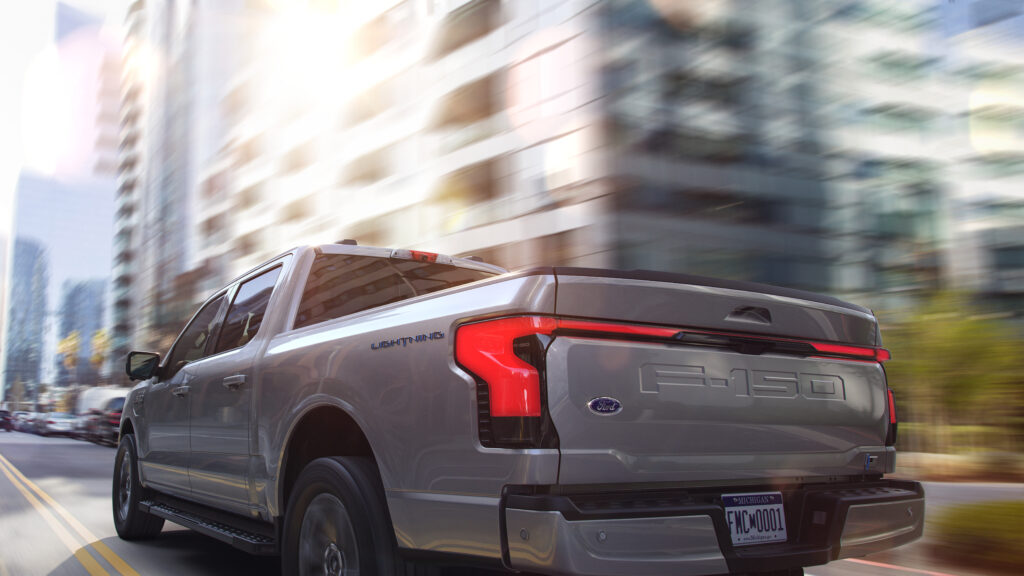
Hyundai and Genesis aren’t the first automakers to threaten their dealers with strongly worded memos. Earlier this year, GM and Ford dealers received letters from their leadership telling them to treat customers more fairly and equitably. The industry-wide push to electric vehicles brings higher production costs and lower margins, so higher prices may become the norm. Still, consumers expect a fair deal, and the automaker’s MSRP typically sets expectations.
Could these warnings be signs of dealer’s weakening grip on car sales in America? It’s a real possibility. You know which automaker actually increased sales in 2021? Tesla, the brand that dares to go without the dealership model. Rivian, Lucid and Fisker are promising to follow Tesla’s lead into the direct-to-consumer sales model.
If dealers won’t respect consumers or automaker guidance, automakers will be thinking a lot harder about alternative sales avenues that benefit consumers and their brands alike. When there’s an inefficiency as big as this, the free market tends to find a solution rather quickly. We’ll be following the developing situation closely.
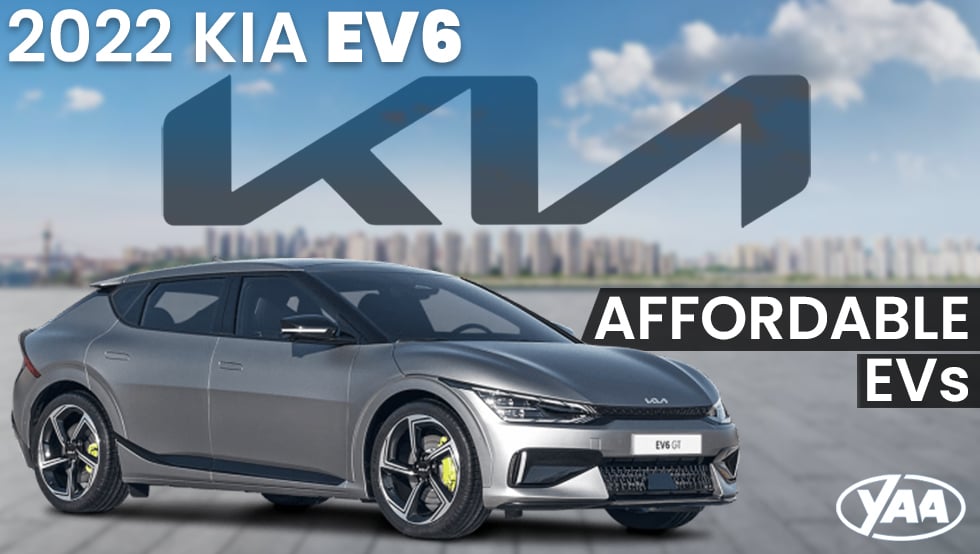
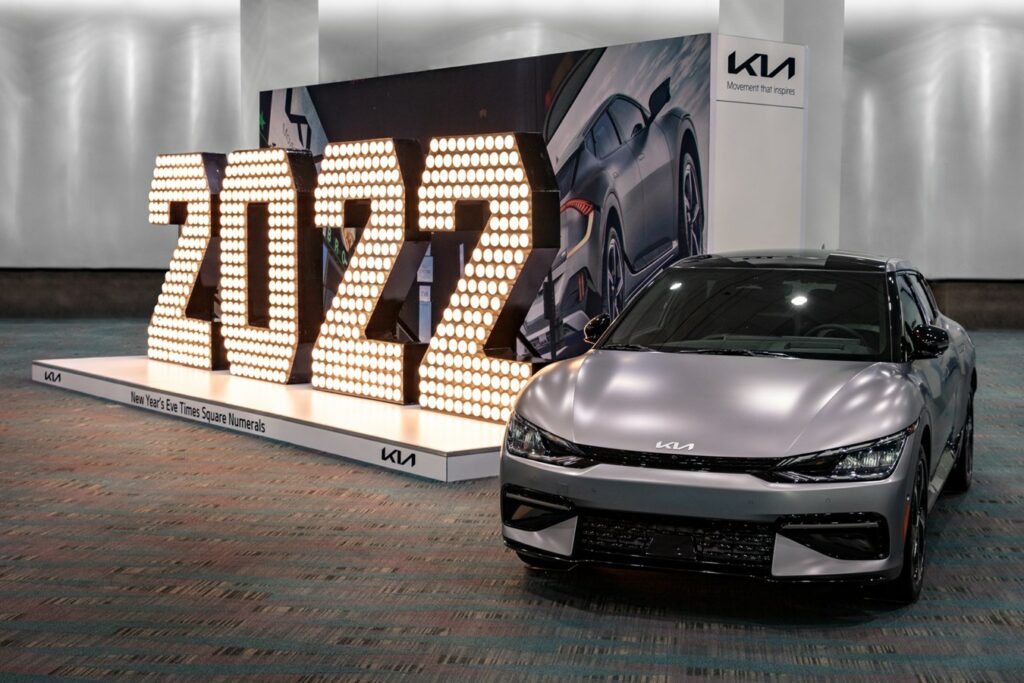
The average new vehicle sells for nearly $50,000, but not every vehicle costs the same to maintain and operate. Fuel economy, reliability, insurance, and maintenance needs are just some of the factors that determine the total cost of ownership for any vehicle. Automakers have made it clear that they’re bringing EVs to the masses, however cheap electric cars remain elusive.
Consumers in the market for an affordable vehicle in 2022 are presented with diverse options, including a larger selection of electric vehicles than ever before. EV‘s are no longer just for tech nerds. People who had never imagined themselves in an electric vehicle are making the switch simply for fuel savings.
However, it remains true that the majority of electric vehicles carry luxury price tags. It’s unlikely you’ll hear anyone say there are “cheap electric cars,” however there are affordable EVs. Here are five affordable electric vehicles that drivers love in 2022.
Starting at $40,760
240 – 260 miles of range
Learn more: CarEdge Review of the Volkswagen ID.4
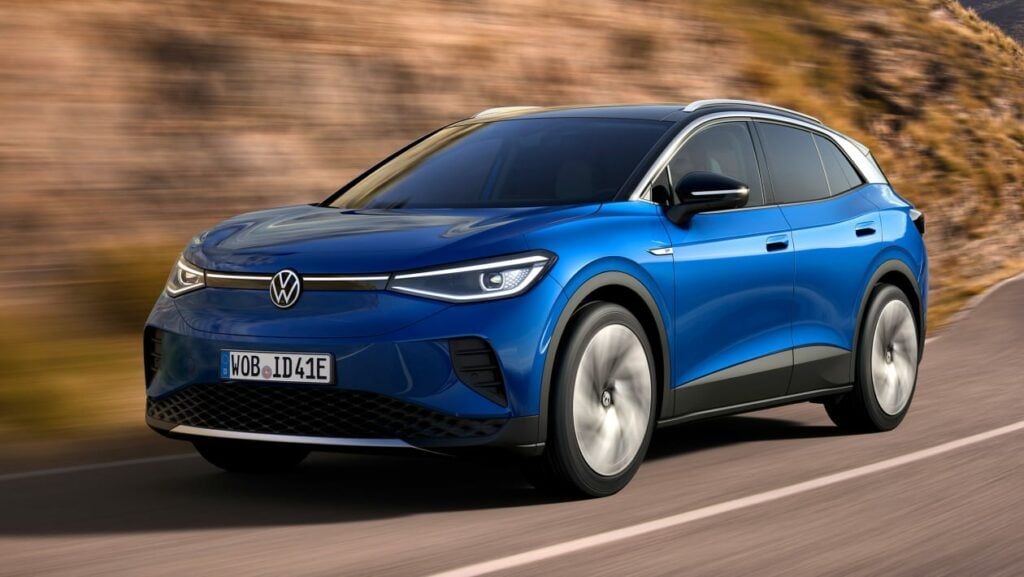
Pro:
Cons:
If you’re in the market for a great electric vehicle that will get you from A to B in comfort and confidence, the 2022 Volkswagen ID.4 should be on your short list. Capable performance, great safety ratings and a spacious cabin make the ID.4 a great place to be for the price point.
The 2022 ID.4 can go the distance, leaving range anxiety behind for the most part. Dozens of real-world range tests show that even on the highway at 70 mph, the ID.4 gets well over 200 miles on a charge. In city driving, closer to 300 miles is likely.
2022 updates are bringing bidirectional charging, plug-and-charge, increased range, quicker charging and major over-the-air updates to the ID.4. Even 2021 models will get new features via OTA updates this summer. Learn more about the game-changing capabilities of OTA updates here.
When it comes time to charge, you can either juice up at home overnight, or take advantage of 3 years of free Electrify America charging with unlimited miles. For frequent travelers, the Electrify America incentive can be worth a few thousand dollars. At a fast charger, charging to 80% takes about 30 minutes.
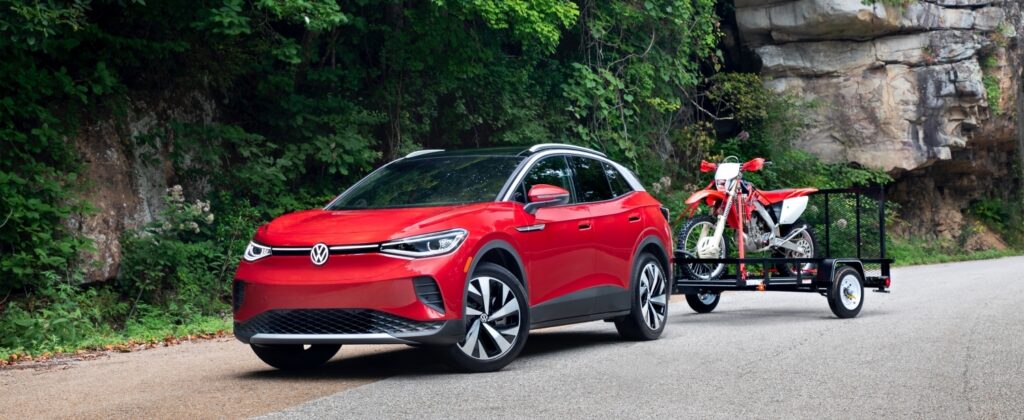
The all-wheel drive version of the ID.4 is where this crossover really shines. Adding another motor to the front axle increases horsepower to 295 with 339 lb-ft of torque and a very satisfying 0-60 time of just 5.4 seconds. However, it’s not quite a car you’d take to the track. The handling is well-tuned for attacking winding roads in inclement weather, although it maintains a more family-oriented demeanor.
The 2021 ID.4 earned a Top Safety Pick+ rating from the Insurance Institute for Highway Safety, and a five-star rating from the National Highway Traffic Safety Administration’s rigorous crash testing. CarEdge recently detailed all electric vehicle safety ratings in 2022.
The Volkswagen ID.4 is about as good as it gets for its use case. For the frugal-minded, It’s a particularly compelling car in the base Pro trim with rear-wheel drive (MSRP $40,760). Volkswagen’s EVs still qualify for the $7,500 federal EV tax credit in the US, which can turn the entry-level ID.4 into a $34,000 purchase. That’s an amazing value in today’s market.
Starting at $40,900
232 – 310 miles of range
Learn more: CarEdge Review of the Kia EV6
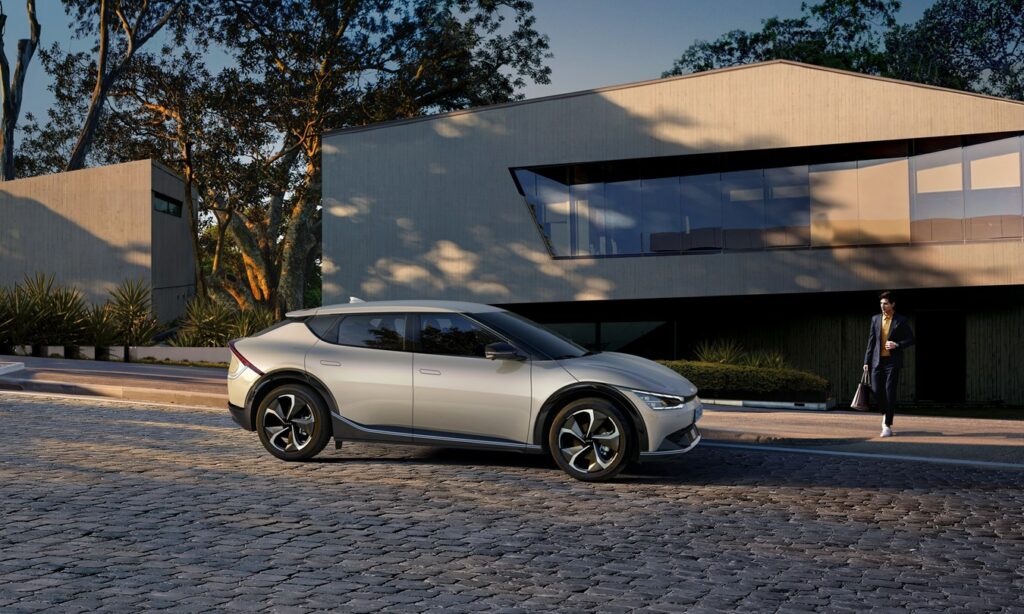
Pro:
Cons:
If you’re a techie who demands the latest and greatest that automakers have to offer, but don’t have the budget to buy an extravagant Lucid Air or Mercedes EQS, the Kia EV6 and its platform sibling the Hyundai IONIQ 5 just might be what you’re looking for.
Kia and Hyundai partnered up to engineer the new E-GMP battery and powertrain platform. The first two models to feature this advanced architecture are the Hyundai IONIQ 5 and the all-new Kia EV6. Both of these crossovers offer ultra-fast charging, impressive range, and over-the-air update capability for just over $40,000.
The 2022 Kia EV6 has a premium feel to it, and that’s something we’re still learning to expect from Kia. Aggressive looks on the outside are met with a welcoming, spacious interior. The cabin is open and airy.
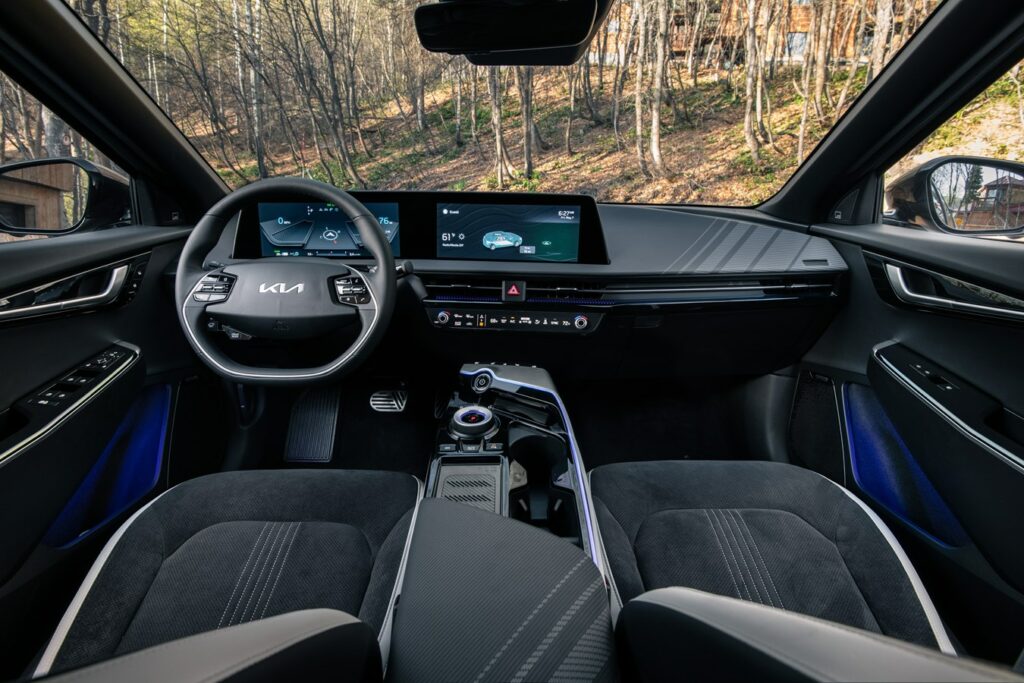
The EV6’s front dash consists of dual 12.3” screens, one for infotainment and another for the instrument cluster. Higher trims also include an augmented reality heads-up display that projects driving directions and basic info onto the windshield within the driver’s line of sight.
The Kia EV6 is no slouch; it can hustle with a heavy foot. All-wheel drive variants produce 313 hp and a 0-60 time of 5.1 seconds, but range drops to 274 miles on a charge. Longer range rear-wheel drive trims still reach 60 mph in just 7.3 seconds. For perspective, that’s about two seconds quicker than the popular Subaru Forester.
With a starting MSRP around $42,000 with destination, the 2022 EV6 represents incredible value for leading-edge tech. It even has faster charging and longer range than similarly priced Tesla models.
The greatest advantage the Kia EV6 has over any Tesla model is that the EV6 qualifies for the federal electric vehicle tax credit. Buyers can save up to $7,500 on their federal taxes if they purchase a Kia EV. Tesla and GM brands are no longer eligible since they’ve already sold greater than 200,000 electric cars.
If you’re a fan of the specs but not the aggressive looks, the Hyundai IONIQ 5 may be the perfect compromise.
Starting at $40,925
220 – 303 miles of range
Learn more: CarEdge Review of the Hyundai IONIQ 5
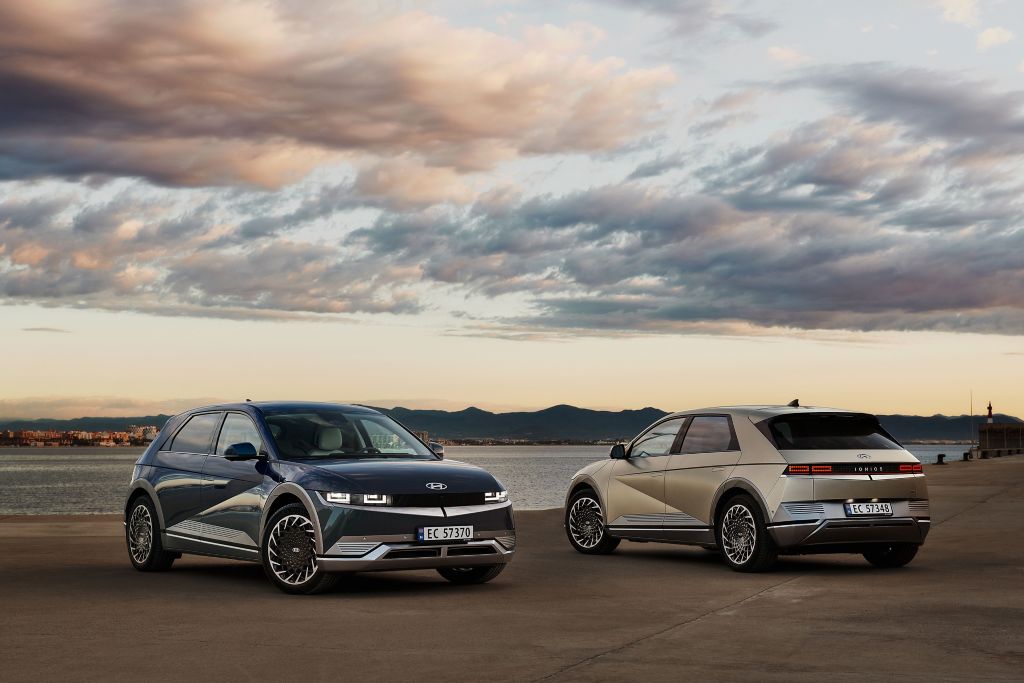
The IONIQ 5 made our CarEdge list of the 5 best cars to buy in 2022!
Pro:
Cons:
The all-new 2022 Hyundai IONIQ 5 is a uniquely retro electric crossover. You’re sure to get plenty of thumbs-ups at stoplights in this head-turner. It’s under $50,000, and surprisingly available at dealerships today. Hyundai says that the pixelated design draws inspiration from the first car they brought to America, the Hyundai Pony.
Also built on the new E-GMP platform, the Kia EV6’s sibling is as comfortable slamming into curves as it is cruising the interstate. The all-wheel drive variant is adequately powered with 320 horsepower and 446 lb-ft of torque. The AWD IONIQ 5 can get up and go with a 0-60 time of 5.2 seconds. That’s just a hair above the current electric crossover sales champion, the Tesla Model Y.
Range varies from 220 miles up to 303 miles depending on battery size and drivetrain. That’s slightly above average for a 2022 model. It’s important to note that some real-world highway range tests have struggled to get the IONIQ 5 past 200 miles on a charge.
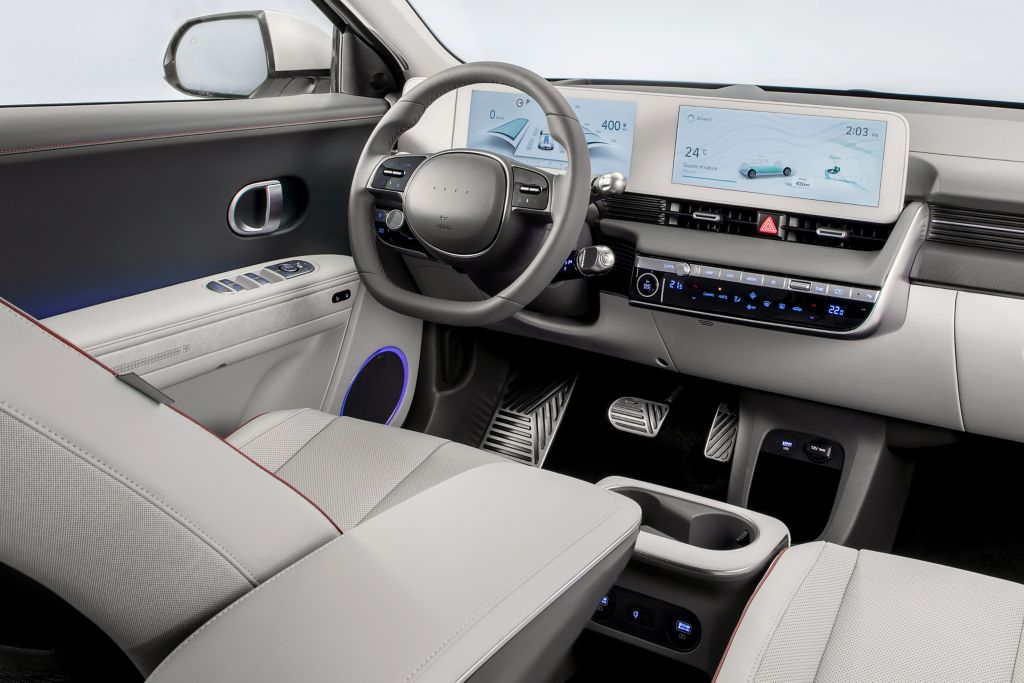
The IONIQ 5 does have one massive advantage over its competitors: charging speed. When you plug in at any Electrify America charging station, the IONIQ 5 can handle up to 230 kW charging speeds. Charging from 10% to 80% (adding 212 miles of range) takes just 18 minutes. The only other vehicle on the market capable of charging that fast is the $75,000+ Lucid Air luxury sedan. The IONIQ 5 has a major charging advantage over the ID.4 and Mustang Mach-E.
The IONIQ 5 is part crossover, part oversized hatchback. That’s not a bad thing. Somehow, Hyundai pulls off this delicate balance in all the right ways. The Ioniq 5’s interior volume (passenger and cargo combined) is 133.7 cubic feet, which is larger than the VW ID.4 and Ford Mustang Mach-E. The roominess has more in common with a Hyundai Santa Fe than a Kona.
Starting at just $40,925 for the 58 kWh smaller battery base model, the IONIQ 5 is available for thousands less than was expected. Most buyers will opt for the larger battery pack (77.4 kWh), which is comparable to other class competitors. With standard rear-wheel drive, the IONIQ 5 SE with the long range battery starts at $44,875. All-wheel drive is available for $3,500-3,900 more. The Limited trim starts at $51,825 and maxes out over $56,000 with all options included.
Starting at $44,990
272 miles of range
Learn more: CarEdge Review of the Tesla Model 3
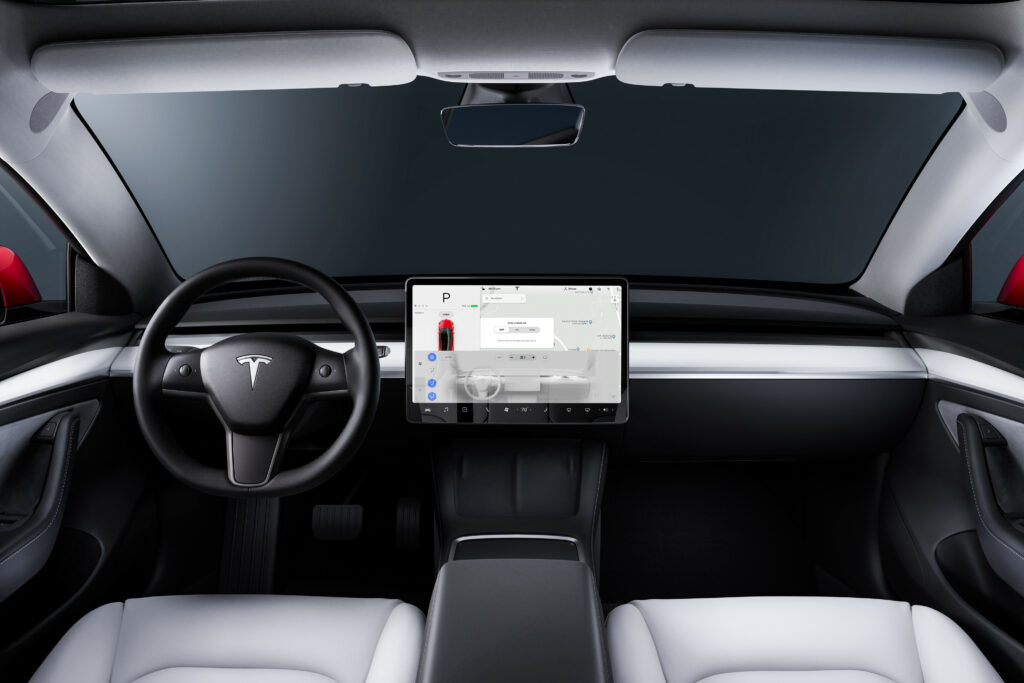
Pro:
Cons:
Say hello to the only Tesla available for less than $50,000. In reality, the 2022 Rear-Wheel Drive Model 3 is the same car as the ‘Standard Range Plus’ variant that the American automaker sold until 2021. Perhaps calling something ‘standard’ just wasn’t on-brand for the luxury automaker.
Don’t get your hopes up if you’re thinking you can get access to Tesla’s Full Self-Driving for under 50 grand. Tesla now charges $12,000 for FSD, which would bring the 2022 Rear-Wheel Drive Model 3 closer to $60,000 after taxes and fees.
Find out everything you need to know about self-driving cars in our CarEdge guide to autonomous vehicles.
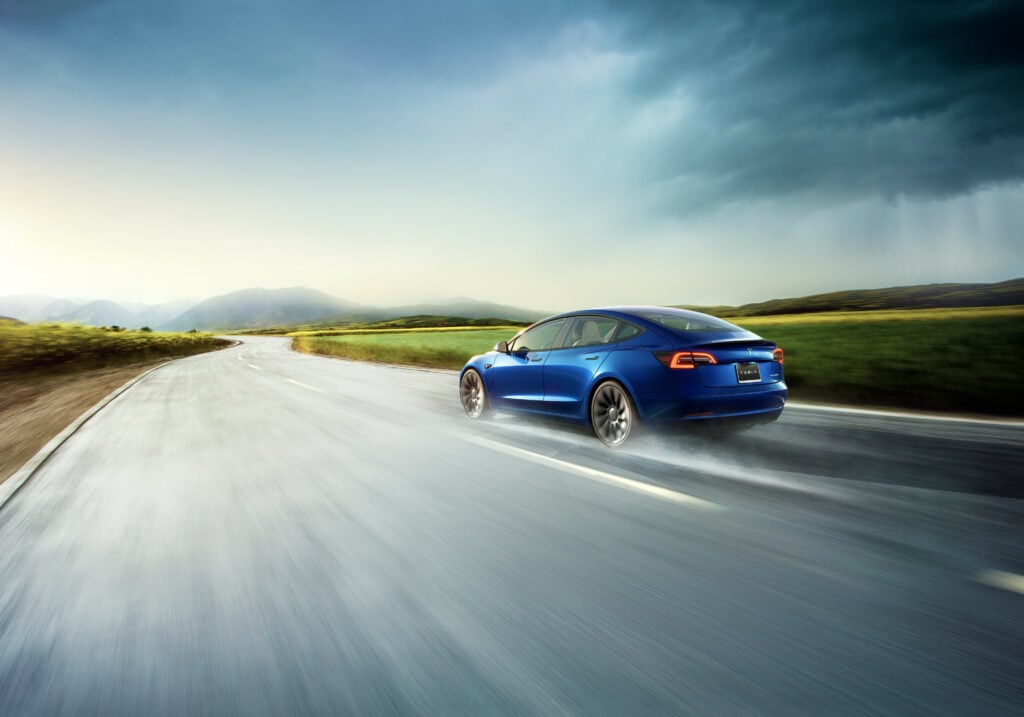
This base trim has received some 2022 upgrades, most notably an increase in range from 262 miles to 272 miles on a charge with the included 18” aero wheels. The 2022 Rear-Wheel Drive Model 3 features new lithium iron phosphate (LFP) batteries which will allow the car to repeatedly charge to 100% without risking as much harm to the life of the battery.
The Rear-Wheel Drive Model 3 is powered by a single electric motor that produces 296 hp and 277 pound-feet of torque. This sedan powers to 60 mph in just 5.8 seconds, not bad for a base trim.
At a Tesla Supercharger, its 60 kWh battery pack can accept up to 170 kW when nearly empty. In the real world, that means charging from 10-80% (adding 190 miles of range) takes about 26 minutes.
The 2022 Tesla Model 3 Rear-Wheel Drive now sells for a notoriously non-negotiable $44,990, plus the $1,200 destination and doc fee. So the cheapest Tesla is now $46,190. Just a year ago, it was $38,190.
Starting at $34,000
258 miles of range
Search hundreds of Hyundai Kona EVs for sale today at CarEdge Car Search!
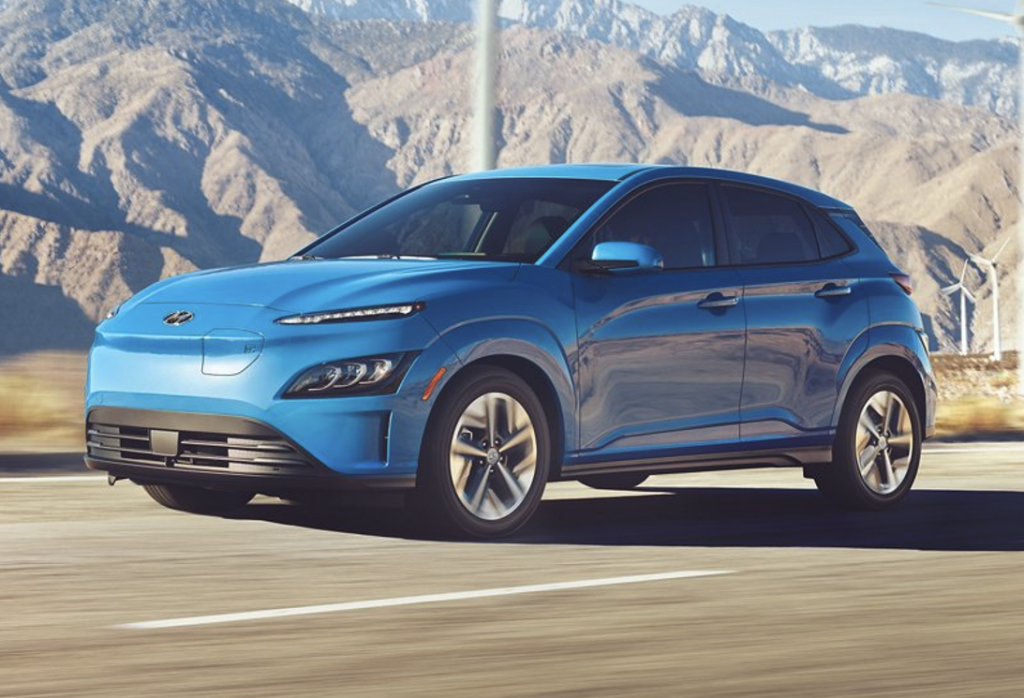
Pro:
Cons:
Hyundai’s forgotten electric vehicle should not be overlooked by those in search of a very affordable entry into electric mobility. The 2022 Hyundai Kona EV may not look all that attractive, but it has decent range and room to fit most lifestyles.
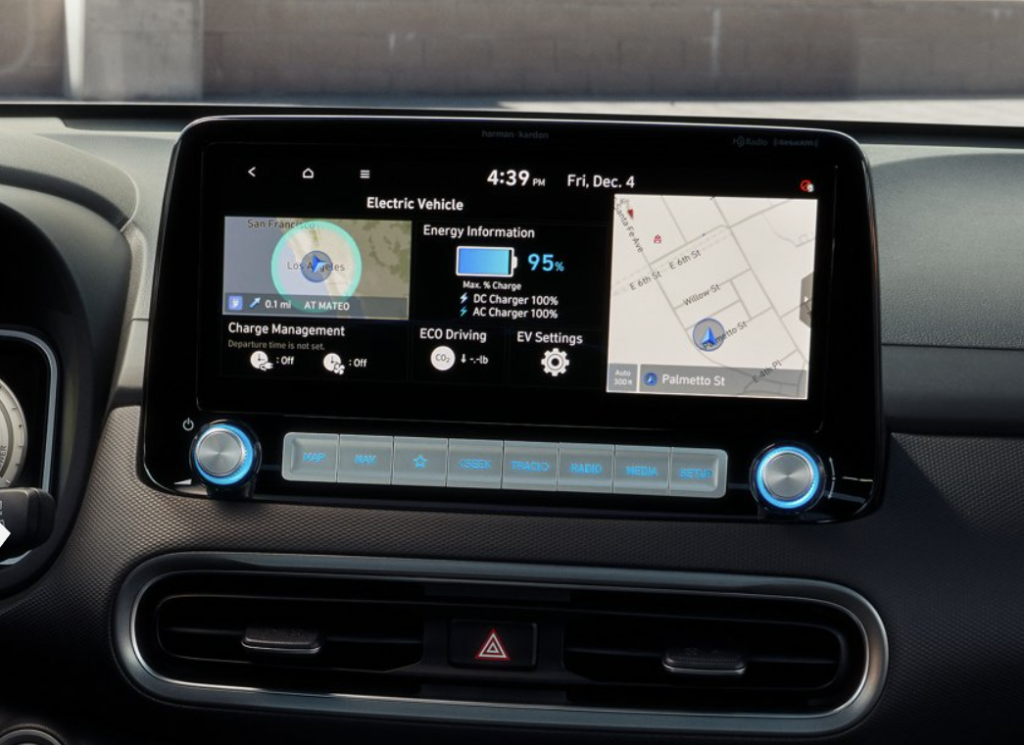
For just $34,000 before incentives, you can become the owner of the original Hyundai EV. This front-wheel drive subcompact crossover gets 258 miles on the charge, exceptional range for a budget EV. Some owners get over 275 miles on a single charge. The Limited trim, top-of-the-line option comes in at $42,500.
If you plug in at home, charging to 100% from a 240-volt dryer outlet will only take you about 9 hours from 10% state of charge. That will get you a full battery overnight while you’re sleeping. At a DC fast charger, the Kona is behind the competition. In 47 minutes, the Kona Electric charges from 10% to 80% capacity.
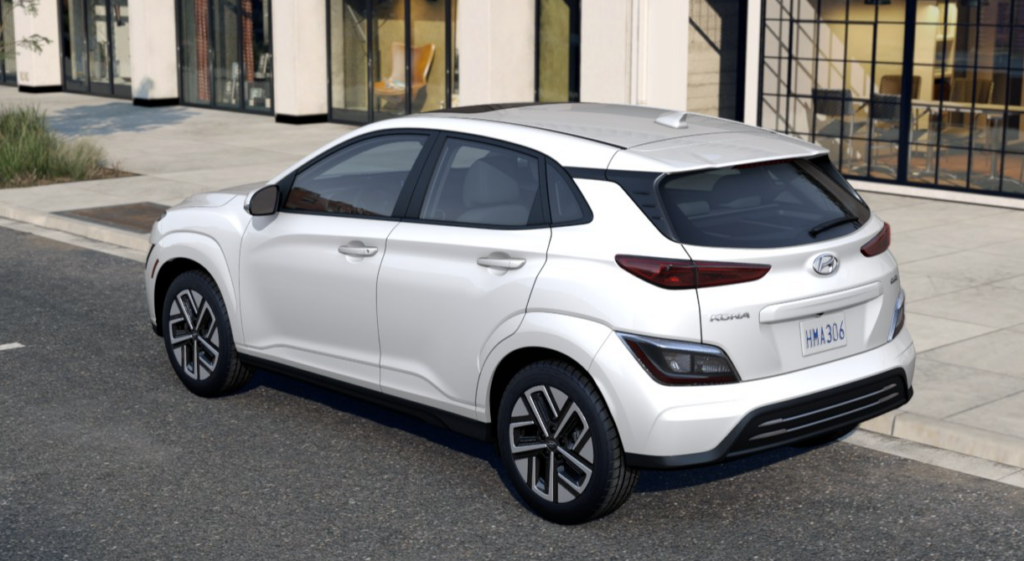
If you’re more of a Kia lover, we have great news. The Kia e-Niro is basically the Kona Electric with a Kia face.
Due to the Kona Electric’s charging faults, this would not be a great road-tripping vehicle. But if you’re looking for cheap electric cars perfect for zipping around town, this is a great deal not to be overlooked.
Available in 2023, but you can reserve one now.
Learn More: CarEdge review of the Fisker Ocean
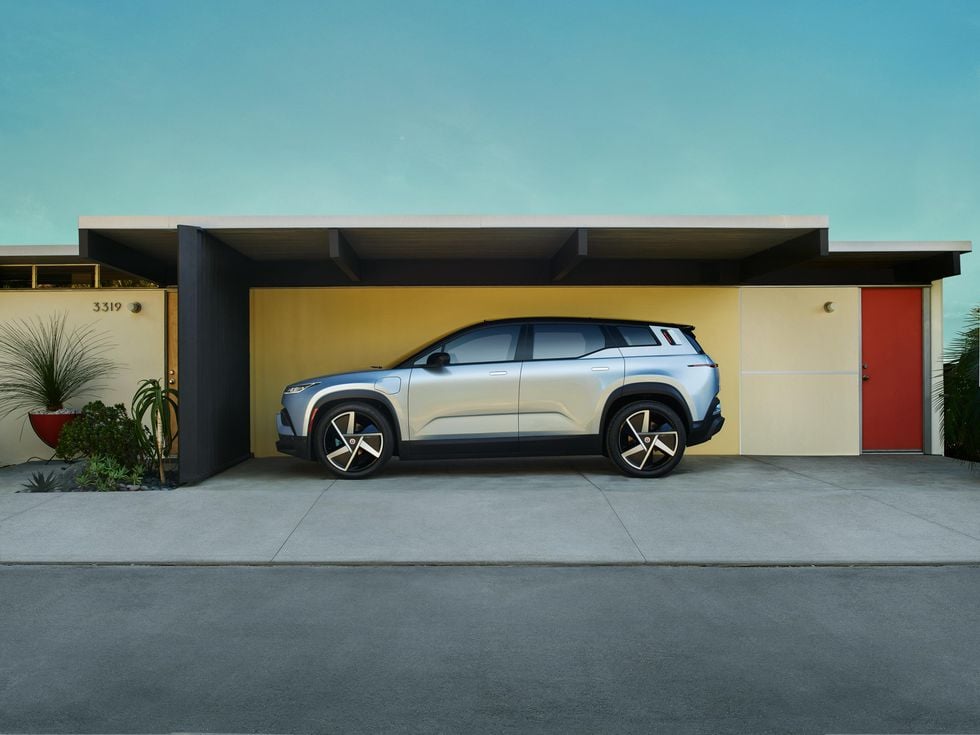
The Fisker Ocean sure does promise a lot. Will it deliver? At just $37,000, Fisker’s all-electric brand quotes 250 miles of range for the entry-level Fisker Ocean crossover. The 2023 Fisker Ocean didn’t make our official list for a few reasons. It hasn’t been produced yet, and delays have pushed the start of production back to November 2022. Fisker says they have 32,000 reservations in the books, so if you’re looking to buy one, it may not be possible until mid-2023. Furthermore, the more capable and sporty Fisker Ocean trims start at $50,000.
You may be wondering where the Chevrolet Bolt and Nissan Leaf are on this list of cheap electric cars. The Leaf is one of the originators of the EV segment, having started it all back in 2011. However, Nissan has regrettably not invested in range or battery performance upgrades over the years. It’s failing to keep up with the growing competition.
The 2022 Nissan Leaf S gets just 149 miles of range and charges quite slowly at between 50 and 100 kilowatts at a fast charger. It is the MOST affordable electric vehicle, with prices ranging from $27,400 to $37,400, however we can’t recommend an EV that leaves the lot at a disadvantage. As electric vehicles come to market with 250 to 400 mile ranges, how will the Leaf retain any resale value?
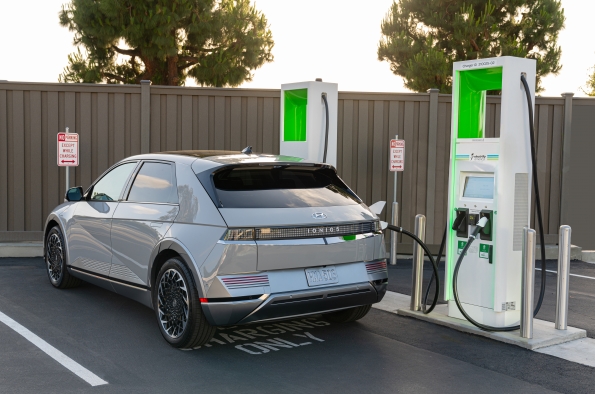
And then there’s the Chevrolet Bolt. It’s affordable and even looks okay with the recent facelift. While it’s true that the recall fix is giving Bolts brand-new, modernized battery packs, the reliability of the Bolt has taken such a hit that it’s too great of a financial risk for today’s consumers to get behind the wheel worry-free. You don’t want your $31,000 purchase to be a symbol of unprecedented fire risk. What would it take to change my mind? At this point, a few years of problem-free driving. Until then stay away from the Chevrolet Bolt. As you can see, there are plenty of other affordable electric vehicles out there in 2022.
Follow the money. Automakers are going all-in on electric vehicles in 2022 and beyond. The consumer benefits as competition rises, so perhaps affordable EVs are here to stay. If you’re looking to go electric in 2022, you don’t have to buy a Tesla, Nissan Leaf or Chevy Bolt. Every automaker is racing to become the next big thing in the world of EVs.
Some parting advice: consider all options, and test drive as many electric vehicles as you can. You’ll be amazed at what’s out there, and even more amazed at what’s to come.